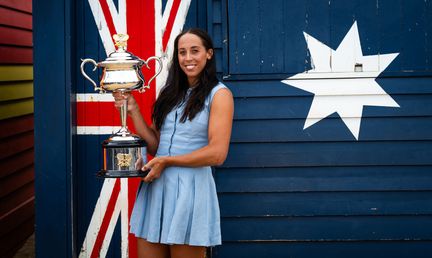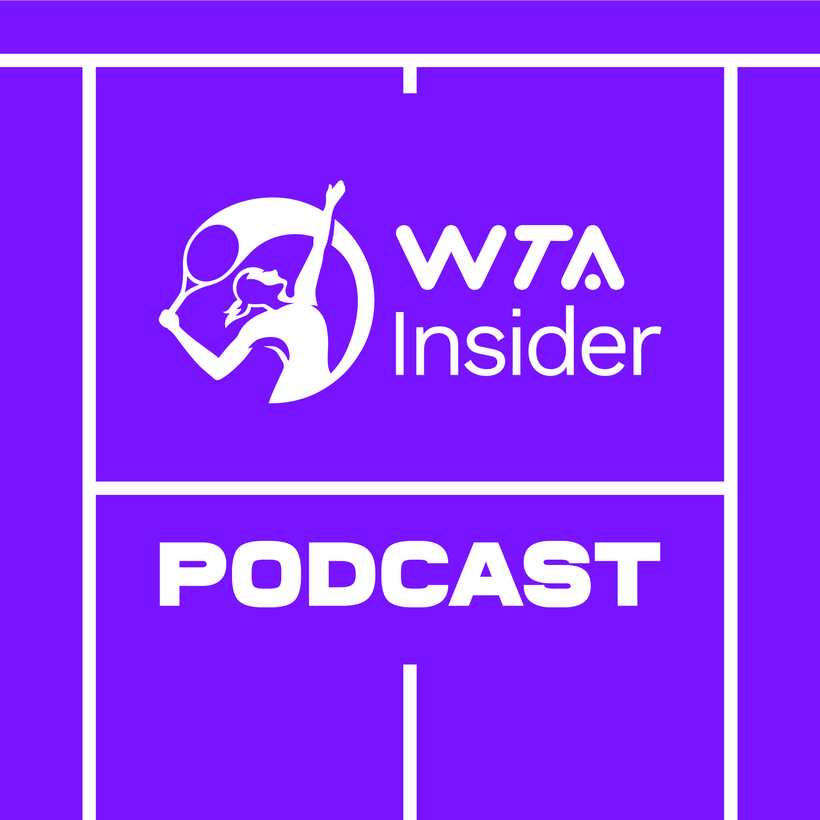After 17 years as a professional tennis player, at the age of 31, Carla Suárez Navarro sensed a change. The grueling training blocks required to play at an elite level no longer held much fascination. Traveling the world wasn’t the adventure it once was and she was looking forward to being a mother. The will to commit everything to tennis was fading.
“The sport has been a fundamental part of my life,” she said at the end of the 2019 season. “At this time, I notice that the time has come to complete a beautiful chapter and begin to enjoy other areas of my life.”
And so, the 5-foot-4 athlete announced that 2020 would be the last season of her distinguished career. She was proud of her accomplishments: a career-high No.6 in singles and No.11 in doubles, 500 match-wins, two titles, nearly $12 million in prize money and a berth in the quarterfinals of three of the Grand Slams. It was time.
Dr. Jennifer Karlow and WTA unite in fight against ovarian cancer
The pride of Las Palmas de Gran Canaria -- one of Spain’s Canary Islands off the coast of Africa -- played her typical schedule, beginning in Australia and the Middle East, with a successful Billie Jean King Cup tie versus Japan in between. And then the COVID-19 virus shut down the world.
Suárez Navarro returned to Barcelona in April to resume training, but something wasn’t right; she suffered from nausea and had difficulty finishing practices. After a series of blood tests, doctors gave her the diagnosis: Hodgkin lymphoma, a form of cancer.
“I felt sad for not playing tennis that year and retiring the way I had planned,” she said in a recent interview. “After all those years on the WTA Tour, I didn’t want to retire because of an illness.”
Suárez Navarro vowed to beat cancer and return for one more season, hopefully 2021, and then retire on her own terms.
“I just wanted to say thanks to all the fans for their support after so many seasons one last time,” she said. “Personally, it was a challenge to overcome, play again at the big stages. After all the good things that tennis gave me, I wanted to give back somehow.”
The doctors told her she had a very curable type of cancer with a high survival rate, which brought her a sense of calm. That she was a relatively young, world-class athlete gave them further hope.
“They weren’t wrong,” she said. “I never felt scared but accepted the situation I had to go through,” she said. “It was a tough time for my family. I didn’t want them to suffer but with cancer there are some inevitable processes.”
Suárez Navarro underwent eight chemotherapy cycles, each lasting two weeks. And there were also 19 radiotherapy sessions. Those brought on nausea and hair loss and a general feeling of weakness.
After six months, she was declared cancer-free in January 2021 -- and immediately began training for a comeback at Roland Garros, her favorite tournament.
“I just wanted to play the tournaments I felt motivated for, also those I could play with my ranking,” Suárez Navarro said. “But I was not ready to play a lot of them. Just had to pick the most meaningful ones and retire with great memories.”
There were times -- practically every day -- when she didn’t think she was going to make it. But thanks to her perseverance and her supportive team, she arrived on time in Paris. She won the first set of her opening match against Sloane Stephens but fell in three.
Wimbledon produced her best memory of her comeback, a match against the World No.1.
“Of course,” she said, “the opening round at Wimbledon against Ash Barty. I lost in three sets, but I enjoyed a lot on a packed Centre Court. The standing ovation I got at the end made it worth it.”
She went on to play the Tokyo Olympics (beating Ons Jabeur in the first round), the US Open and the Billie Jean King Cup finals.
“It was very emotional and special,” Suarez Navarro said. “All of them were different for various reasons. After all the bad things that happened that was a present for me, for my family and friends who supported me in tough times.”
For her perseverance -- and her example -- Suarez Navarro has been honored by the WTA as part of the ACEing Cancer by Hologic campaign and a research grant in her name will be awarded in 2024.
Is Suarez Navarro happy she returned?
“Absolutely yes,” she said.
Tennis has missed her style, her versatile, tactical game. She liked to change the rhythm of points, favoring spin over flat power shots. Suárez Navarro began her career defensively, far beyond the baseline but in later years consistently moved forward. Her one-hand backhand, especially when it sailed crosscourt, was a thing of beauty.
Asked to choose some highlights, she cites the 2015 Miami Open final. Although she lost there to Serena Williams, her run thrust her into the Top 10 for the first time. The Doha title a year later gave her that No.6 ranking. Defeating Venus Williams for the first time, to reach the 2009 Australian Open quarterfinals, was another thrill.
Don’t think for a moment that things have calmed down in retirement. Suarez Navarro gave birth to twin daughters, Noa and Ona, in June. She and her partner, Olga García -- one of the leading scorers ever for the FC Barcelona women’s team and a former national squad member -- are raising them in La Rioja in northern Spain.
“Having a family is beautiful,” Suárez Navarro said. “At the same time, it’s very demanding because you have to commit 24/7. But it’s an experience I would recommend to everyone. Right now they just eat and sleep, everything is very easy. I can’t wait to see them walking and talking. I will be very busy then.”
Tennis, not surprisingly, does not play a big role in her daily life.
“Honestly?” Suárez Navarro asked. “After retiring, I think I grabbed a racquet two, three times. Maybe I can teach my daughters, but that’s something time will tell.”
To learn more about the ACEing Cancer by Hologic initiative including how to make a donation, visit wta.foundation/donate.









